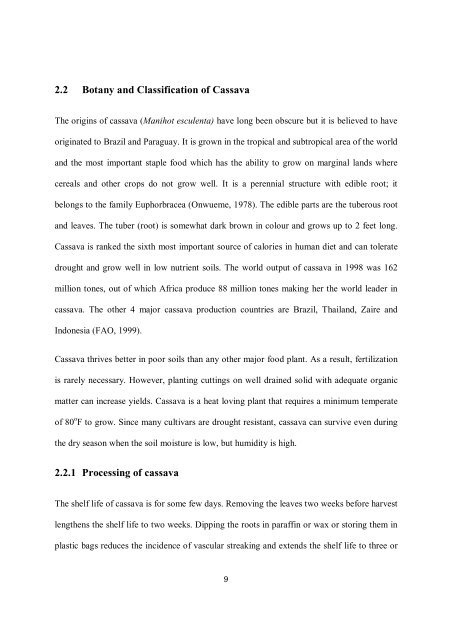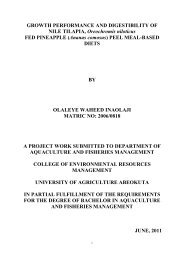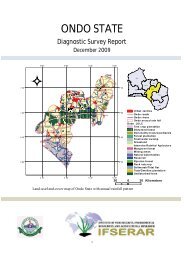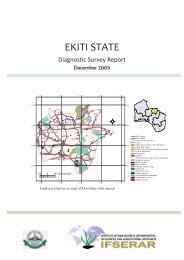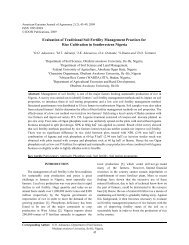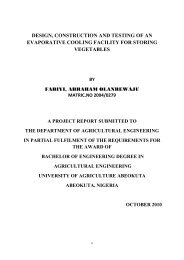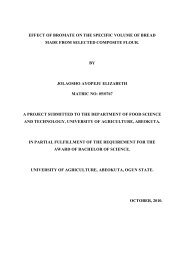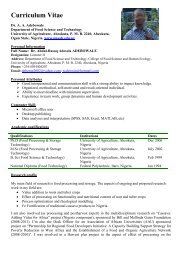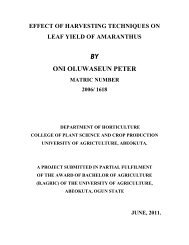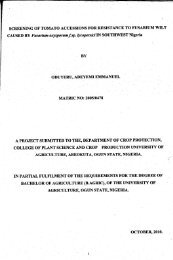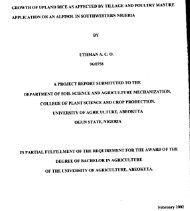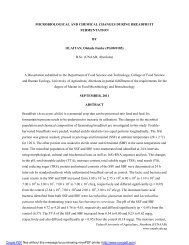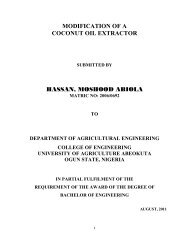consumer acceptability of spiced composite bread - The Federal ...
consumer acceptability of spiced composite bread - The Federal ...
consumer acceptability of spiced composite bread - The Federal ...
Create successful ePaper yourself
Turn your PDF publications into a flip-book with our unique Google optimized e-Paper software.
2.2 Botany and Classification <strong>of</strong> Cassava<br />
<strong>The</strong> origins <strong>of</strong> cassava (Manihot esculenta) have long been obscure but it is believed to have<br />
originated to Brazil and Paraguay. It is grown in the tropical and subtropical area <strong>of</strong> the world<br />
and the most important staple food which has the ability to grow on marginal lands where<br />
cereals and other crops do not grow well. It is a perennial structure with edible root; it<br />
belongs to the family Euphorbracea (Onwueme, 1978). <strong>The</strong> edible parts are the tuberous root<br />
and leaves. <strong>The</strong> tuber (root) is somewhat dark brown in colour and grows up to 2 feet long.<br />
Cassava is ranked the sixth most important source <strong>of</strong> calories in human diet and can tolerate<br />
drought and grow well in low nutrient soils. <strong>The</strong> world output <strong>of</strong> cassava in 1998 was 162<br />
million tones, out <strong>of</strong> which Africa produce 88 million tones making her the world leader in<br />
cassava. <strong>The</strong> other 4 major cassava production countries are Brazil, Thailand, Zaire and<br />
Indonesia (FAO, 1999).<br />
Cassava thrives better in poor soils than any other major food plant. As a result, fertilization<br />
is rarely necessary. However, planting cuttings on well drained solid with adequate organic<br />
matter can increase yields. Cassava is a heat loving plant that requires a minimum temperate<br />
<strong>of</strong> 80 o F to grow. Since many cultivars are drought resistant, cassava can survive even during<br />
the dry season when the soil moisture is low, but humidity is high.<br />
2.2.1 Processing <strong>of</strong> cassava<br />
<strong>The</strong> shelf life <strong>of</strong> cassava is for some few days. Removing the leaves two weeks before harvest<br />
lengthens the shelf life to two weeks. Dipping the roots in paraffin or wax or storing them in<br />
plastic bags reduces the incidence <strong>of</strong> vascular streaking and extends the shelf life to three or<br />
9


